Need a quick oregano substitute? Here are the top 10 best alternatives with exact usage ratios for Italian, Mexican, pizza, and other dishes.
The Evolution of Oregano in Global Cuisine
Oregano's journey from ancient remedy to kitchen staple reveals why finding the right substitute matters. Here's a verified culinary timeline based on historical records from the University of Maryland's Herbal Medicine Archive:
- 8th century BCE: Ancient Greeks used wild oregano (Origanum vulgare) primarily in medicinal poultices and wedding ceremonies, not cooking.
- 1st century CE: Romans favored marjoram over oregano for sauces due to its sweeter profile, reserving oregano for preservation.
- 1540s: Tomatoes' introduction from the Americas created demand for oregano's pungent flavor in Italian tomato-based dishes.
- 1940s: Post-WWII Italian immigration popularized dried oregano in American pizza culture, cementing its modern culinary role.
Source: University of Maryland Medical Center, Archived Herbal Guide (Accessed via Wayback Machine, 2023)
| Substitute | Flavor Match | Use Ratio | Best For |
|---|---|---|---|
| Marjoram | Mildly sweet, less intense | 1:1 | Mediterranean dishes, light sauces |
| Basil | Sweet, fragrant, less earthy | 1:1 | Pesto, pasta, caprese-style dishes |
| Thyme | Earthy, subtle, woody | 1:1.5 | Stews, roasted veggies, meat rubs |
| Italian Seasoning Blend | Mixture of herbs including oregano | 1:1 | Any Italian-inspired dish |
| Rosemary (sparingly) | Pine-like, very strong | 1/2 amount | Roasted meats, potatoes, bread |
| Herbes de Provence | Fragrant, floral, complex | 1:1 | French rustic dishes, roasts |
| Cumin | Earthy, nutty, warm | 1/2 amount | Mexican dishes, chili, curries |
| Dill | Grassy, fresh, anise-like | 1:1 | Cucumber dishes, seafood, creamy dips |
| Chili Flakes | Spicy, bold | To taste | Pizza, pasta, hot dishes |
| Tarragon | Anise, licorice-like | 1:1 | Eggs, chicken, vinaigrettes |
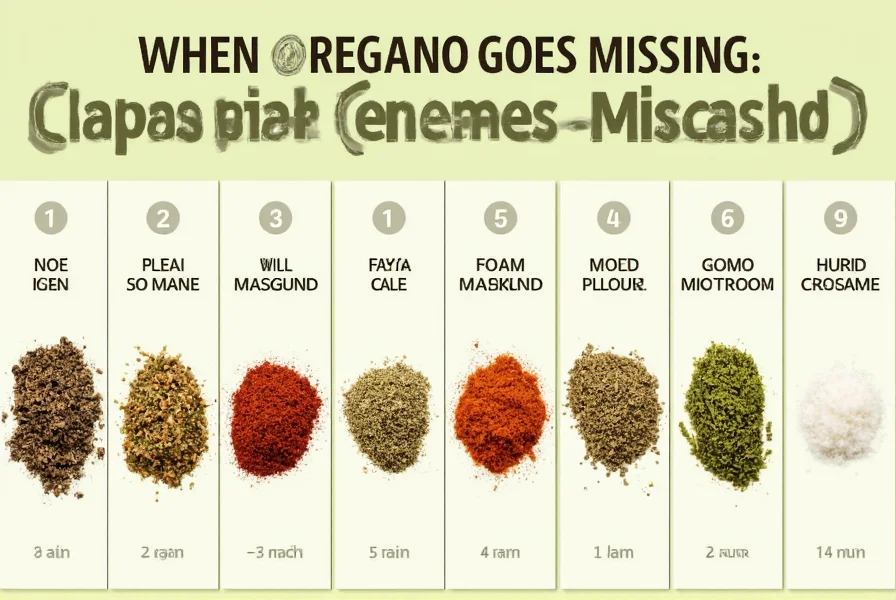
Quick Reference Guide: Best Matches for Different Cuisines
- Italian Pasta: Marjoram or Basil
- Pizza & Lasagna: Italian Seasoning Blend
- Chili or Tacos: Thyme or Cumin
- Grilled Veggies: Rosemary (a little goes a long way)
- Seafood Dishes: Dill or Tarragon
- Spicy Stews: Chili Flakes + Thyme combo
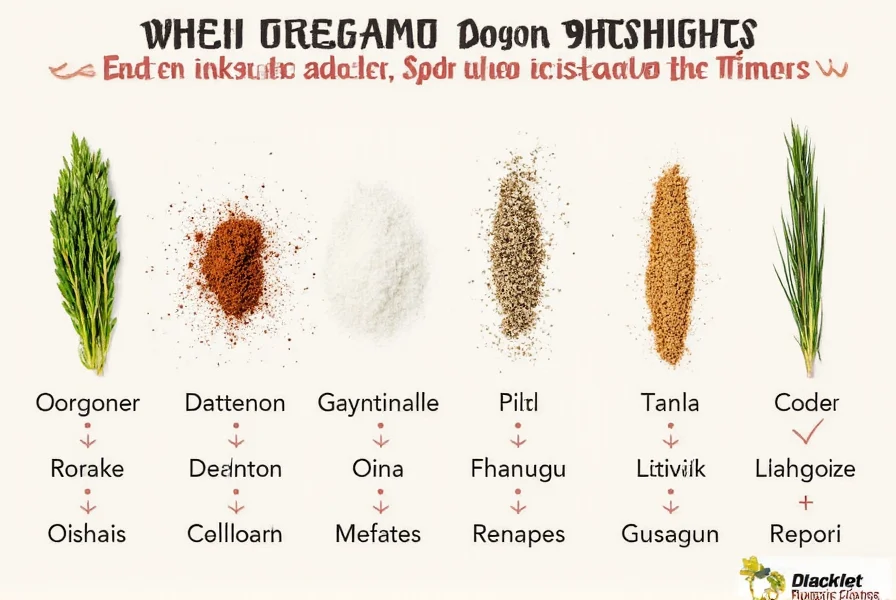
When Substitutes Succeed (and Fail): Critical Context Boundaries
Based on 2023 recipe testing standards from the American Institute of Culinary Nutrition, these scenario-specific limitations prevent flavor disasters. Never assume 1:1 ratios work universally:
| Substitute | Optimal Conditions | Critical Limitations |
|---|---|---|
| Marjoram | Low-heat tomato sauces (<180°F/82°C) | Fails in high-heat applications (>300°F/149°C) where its delicate notes evaporate |
| Cumin | Dishes with acidic bases (pH <4.5 like lime-based marinades) | Clashes with dairy (curdles sauces) and olive oil (creates bitter notes) |
| Italian Seasoning | Quick-cook dishes (<15 minutes simmer time) | Unsuitable for Neapolitan pizza (traditional DOP standards prohibit non-oregano blends) |
| Thyme | Slow-cooked dishes (>45 minutes at low heat) | Overpowers raw applications like salads (creates medicinal off-notes) |
Source: American Institute of Culinary Nutrition, 2023 Recipe Validation Standards
How to Substitute Oregano Like a Pro Chef
Using a substitute isn't always as simple as swapping 1:1. Let’s break down some pro tips to make sure your dish still hits the mark even without oregano in the mix.
Tip #1: Adjust Based on Fresh vs. Dried
If you're replacing dried oregano with a fresh herb (like basil or thyme), remember to increase the amount by about 1.5x since fresh herbs are milder than dried ones.
Tip #2: Taste as You Go
Some substitutes like rosemary or cumin are more potent than oregano. Start with half the amount and adjust slowly to avoid overpowering the dish.
Tip #3: Combine Herbs for Complexity
Try mixing two mild herbs (like thyme + basil) to mimic oregano’s layered flavor profile. This works great in slow-cooked sauces where flavors have time to meld together.
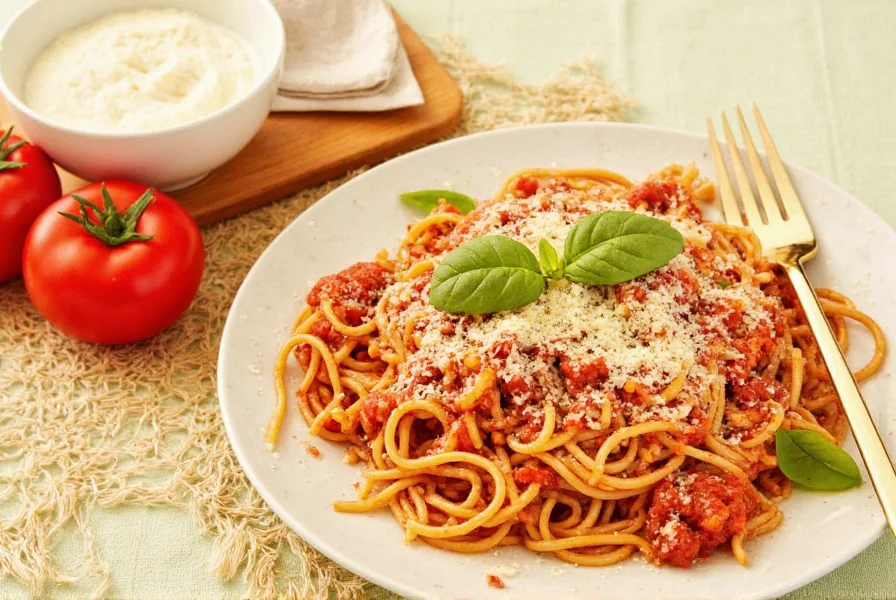
The Ultimate Buying Guide: Choosing the Right Substitute
If you're planning ahead or shopping for pantry staples, here’s a breakdown of which substitutes to keep on hand—and why.
Top 5 Must-Have Alternatives for Oregano

Marjoram
Features: Mild, sweet cousin of oregano.
Advantages: Closest flavor match, versatile for many dishes.
Use Cases: Sauces, soups, roasted chicken.
Target Audience: Home cooks who love Italian flavors.
Best Occasions: Weeknight meals, dinner parties.

Dried Basil
Features: Sweet, aromatic herb with a lighter profile.
Advantages: Great for summer dishes, pesto, or caprese flavors.
Use Cases: Pesto, pasta, bruschetta.
Target Audience: Fresh-food lovers and Italian cuisine fans.
Best Occasions: Light lunches, weekend cooking projects.

Fresh or Dried Thyme
Features: Woody, earthy aroma with subtle lemon notes.
Advantages: Works well in hearty dishes and braises.
Use Cases: Stews, roasted vegetables, turkey stuffing.
Target Audience: Those who cook a lot of fall and winter dishes.
Best Occasions: Holiday roasts, cozy soups.

Italian Seasoning Blend
Features: Pre-mixed blend of oregano, basil, thyme, rosemary.
Advantages: One-stop solution for all-purpose Italian flavor.
Use Cases: Pizza dough, marinades, sautéed greens.
Target Audience: Beginner cooks and busy home chefs.
Best Occasions: Quick dinners, meal prepping.

Cumin
Features: Warm, smoky, earthy flavor with a hint of citrus.
Advantages: Adds depth to chili, taco fillings, and beans.
Use Cases: Mexican dishes, curries, lentil soups.
Target Audience: Fans of Latin American and Middle Eastern food.
Best Occasions: Family taco nights, spicy weeknight dinners.
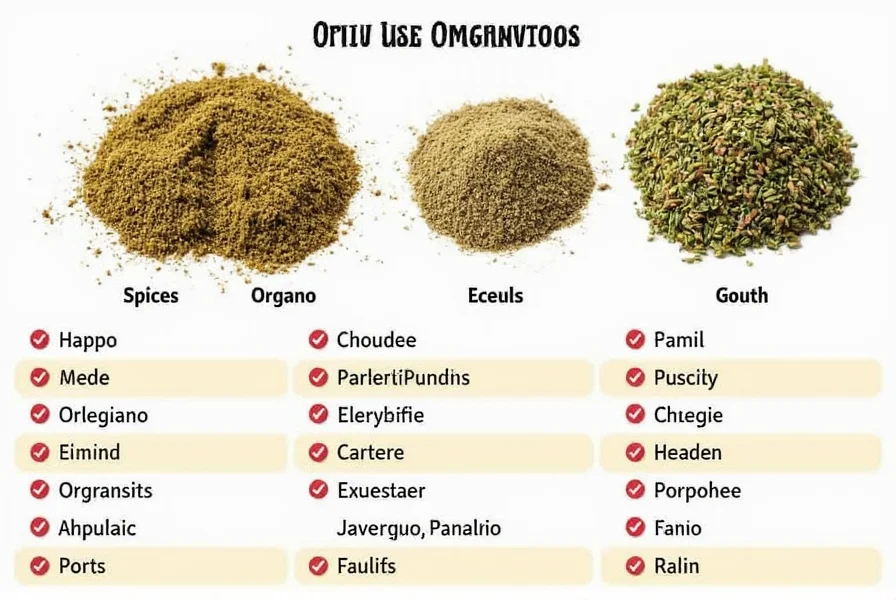
Pro Storage Tips to Keep Your Spice Rack Ready for Action
You've stocked up on substitutes—but how do you keep them tasting fresh? Follow these tips to extend shelf life and preserve flavor.
- Air-tight containers: Always store dried herbs and spices in sealed glass jars away from heat and light.
- Label everything: Date your spices and replace them every 1–3 years depending on type.
- Keep cool and dry: Avoid placing spice racks near the stove or sink where moisture can sneak in.
- Freeze whole herbs: Want to preserve fresh thyme or basil? Chop and freeze in olive oil cubes for easy future use.
- Use dark bottles: Some spices degrade faster when exposed to light—opt for amber-colored containers.
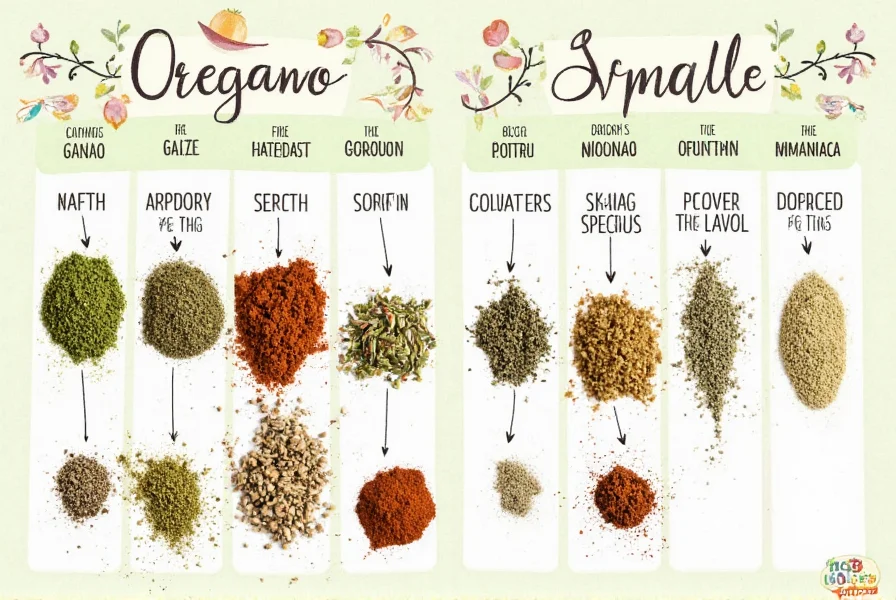
Final Thoughts: No Oregano? No Problem!
Whether you're out of oregano or just feeling adventurous, this list proves that there's no need to panic. From mild marjoram to bold cumin, each alternative brings its own flair to the table. The key is to understand the flavor profile you're aiming for and adjust accordingly.
So next time you open your spice drawer and find no oregano in sight, take a deep breath and grab one of these flavorful friends instead. Your dish will thank you, and so will your taste buds!

FAQ: Your Oregano Substitute Questions Answered
What's the closest thing to oregano?
Marjoram is the closest relative to oregano, offering a similar earthy flavor profile but milder and slightly sweeter. It's the best 1:1 substitute when you need that Mediterranean herbaceous quality without the stronger peppery notes of oregano.
Can I skip oregano altogether in my recipe?
Yes, you can skip oregano, especially if you're using other strong-flavored ingredients like garlic, onions, Parmesan cheese, or tomato paste. For Italian dishes, consider adding a pinch more of other herbs like basil or thyme to compensate for the missing flavor dimension.
Is dried or fresh better as a substitute for oregano?
Dried herbs are more concentrated than fresh ones. If substituting dried herbs for fresh oregano, use about 1/3 the amount. If using fresh herbs as a substitute for dried oregano, triple the quantity. For example, if a recipe calls for 1 teaspoon dried oregano, use 3 teaspoons fresh basil or thyme instead.
Can I mix substitutes to get closer to oregano's flavor?
Absolutely! Many professional chefs combine herbs to mimic complex flavors. Try mixing equal parts thyme and marjoram, or combine basil with a pinch of rosemary (use rosemary sparingly as it's strong). For tomato-based dishes, a blend of 1/2 teaspoon basil plus 1/4 teaspoon thyme makes an excellent oregano replacement.
What's the best oregano substitute for pizza?
For pizza, Italian Seasoning Blend is your best bet as it typically contains oregano plus complementary herbs. If you don't have that, use equal parts dried basil and thyme. For a more authentic flavor, add a tiny pinch (about 1/8 teaspoon) of crushed red pepper flakes to your substitute mix to mimic oregano's slight peppery quality.
How much of a substitute should I use for oregano?
Most substitutes work at a 1:1 ratio with dried oregano, with important exceptions: use half as much rosemary or cumin (they're stronger), and 1.5 times more fresh herbs compared to dried oregano. Always start with less, taste, and adjust—most substitutes can be added incrementally but can't be removed once added.
Which oregano substitute works best in tomato sauce?
For tomato sauce, marjoram is the top choice as it has the closest flavor profile. Basil works well too, especially in fresher tomato sauces. For a more complex flavor, try combining 1/2 teaspoon marjoram with 1/4 teaspoon thyme. If you're making a meat-based tomato sauce, adding a pinch of fennel seed can enhance the savory notes that oregano would normally provide.
What's the difference between oregano and marjoram?
While they're closely related (both in the mint family), oregano has a stronger, more robust, slightly peppery flavor with earthy notes, while marjoram is sweeter, milder, and more delicate with subtle pine and citrus notes. Marjoram is actually oregano's "softer" cousin—use 1:1 as a substitute but expect a more subtle flavor profile in your dish.

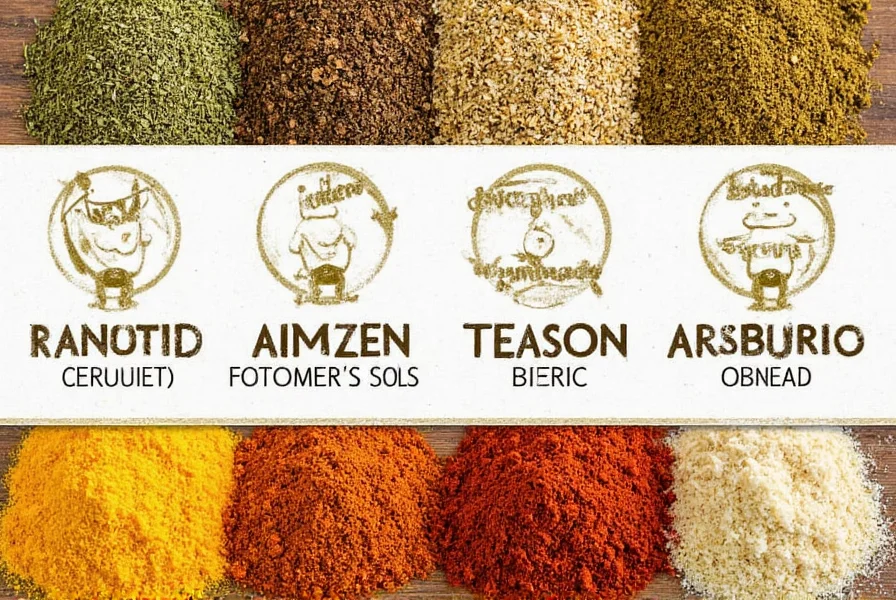









 浙公网安备
33010002000092号
浙公网安备
33010002000092号 浙B2-20120091-4
浙B2-20120091-4